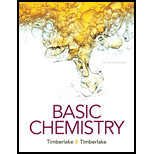
(a)
Interpretation:
To describe the shape of 3p orbital.
Concept Introduction:
Types of subshell:
- s-subshell:
s-subshell contains only one orbital known as ‘ns’ orbital where n represents the principle quantum number.
It is spherical in shape and it can have maximum 2 electrons in it.
- p-subshell:
p-subshell contains three orbitals known as ‘npx, npy and npz’ orbital where n represents the principle quantum number.
Its shape is like dumbbell and it can have maximum 6 electrons in it (2 electrons in each orbital).
- d-subshell:
d-subshell contains five orbitals and its shape is like double dumbbell and it can have maximum 10 electrons in it (2 electrons in each orbital).
(b)
Interpretation:
To determine the shape of 6s orbital.
Concept Introduction:
Types of subshell:
- s-subshell:
s-subshell contains only one orbital known as ‘ns’ orbital where n represents the principle quantum number.
It is spherical in shape and it can have maximum 2 electrons in it.
- p-subshell:
p-subshell contains three orbitals known as ‘npx, npy and npz’ orbital where n represents the principle quantum number.
Its shape is like dumbbell and it can have maximum 6 electrons in it (2 electrons in each orbital).
- d-subshell:
d-subshell contains five orbitals and its shape is like double dumbbell and it can have maximum 10 electrons in it (2 electrons in each orbital).
(c)
Interpretation:
To describe the shape of 4p orbital.
Concept Introduction:
Types of subshell:
- s-subshell:
s-subshell contains only one orbital known as ‘ns’ orbital where n represents the principle quantum number.
It is spherical in shape and it can have maximum 2 electrons in it.
- p-subshell:
p-subshell contains three orbitals known as ‘npx, npy and npz’ orbital where n represents the principle quantum number.
Its shape is like dumbbell and it can have maximum 6 electrons in it (2 electrons in each orbital).
- d-subshell:
d-subshell contains five orbitals and its shape is like double dumbbell and it can have maximum 10 electrons in it (2 electrons in each orbital).
Want to see the full answer?
Check out a sample textbook solution
Chapter 5 Solutions
Basic Chemistry (5th Edition)
 ChemistryChemistryISBN:9781305957404Author:Steven S. Zumdahl, Susan A. Zumdahl, Donald J. DeCostePublisher:Cengage Learning
ChemistryChemistryISBN:9781305957404Author:Steven S. Zumdahl, Susan A. Zumdahl, Donald J. DeCostePublisher:Cengage Learning ChemistryChemistryISBN:9781259911156Author:Raymond Chang Dr., Jason Overby ProfessorPublisher:McGraw-Hill Education
ChemistryChemistryISBN:9781259911156Author:Raymond Chang Dr., Jason Overby ProfessorPublisher:McGraw-Hill Education Principles of Instrumental AnalysisChemistryISBN:9781305577213Author:Douglas A. Skoog, F. James Holler, Stanley R. CrouchPublisher:Cengage Learning
Principles of Instrumental AnalysisChemistryISBN:9781305577213Author:Douglas A. Skoog, F. James Holler, Stanley R. CrouchPublisher:Cengage Learning Organic ChemistryChemistryISBN:9780078021558Author:Janice Gorzynski Smith Dr.Publisher:McGraw-Hill Education
Organic ChemistryChemistryISBN:9780078021558Author:Janice Gorzynski Smith Dr.Publisher:McGraw-Hill Education Chemistry: Principles and ReactionsChemistryISBN:9781305079373Author:William L. Masterton, Cecile N. HurleyPublisher:Cengage Learning
Chemistry: Principles and ReactionsChemistryISBN:9781305079373Author:William L. Masterton, Cecile N. HurleyPublisher:Cengage Learning Elementary Principles of Chemical Processes, Bind...ChemistryISBN:9781118431221Author:Richard M. Felder, Ronald W. Rousseau, Lisa G. BullardPublisher:WILEY
Elementary Principles of Chemical Processes, Bind...ChemistryISBN:9781118431221Author:Richard M. Felder, Ronald W. Rousseau, Lisa G. BullardPublisher:WILEY





